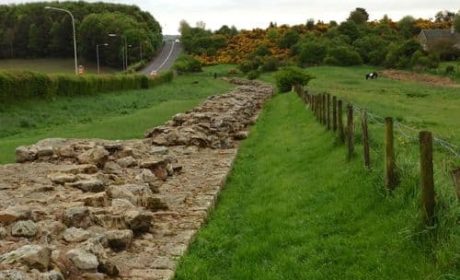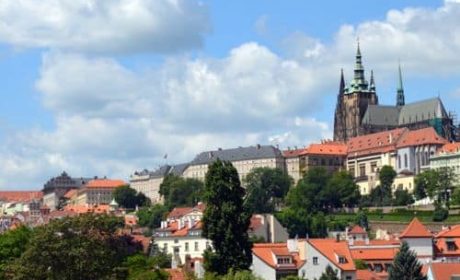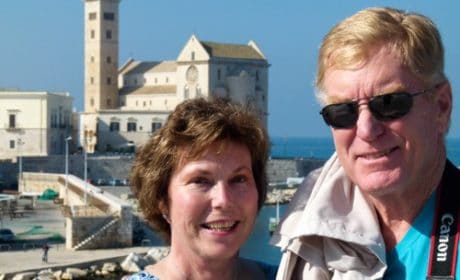If you’re looking to explore Europe, but want to get away from the crowds in the most popular cities, Bucharest, Romania is the place to go! Guest contributor, David Johnston from Travelsewhere, is here to tell us all about the many things to do in Bucharest, a historical jewel with endless attractions to explore.
Exploring Boomer-style: Things To Do in Bucharest

Often confused with neighboring Budapest, the Romanian capital city warrants far more interest than it’s typically given. Full of distant and recent history, Bucharest is not only a gateway to the rest of Romania but a place full of stories that you’ll learn while exploring the city.
This grand and expansive city is begging to be explored, with landmarks from a whole host of eras. It may not receive as much attention as other European capitals, but you can’t say there’s nothing to do in Bucharest.
Strolling Bucharest Old Town

What kind of European city would Bucharest be without an old town? As the core of the city, this is where Bucharest began back in the 1400s. The enclosed, winding cobblestone streets make it easier to imagine this as a medieval city, even though most of the buildings today appear much more modern. There are still some important historical landmarks found here however.

A particularly noteworthy one is Curtea Veche, a 15th century palace built by Vlad the Impaler during his princely reign. Visitors to Romania often venture out across the country for attractions related to Vlad Tepes due to his link to the fictional character Dracula. Well, there’s one right here in Bucharest and it even has a bust of his likeness out front.
Curtea Veche Palace is often cited as the first reference to Bucharest and what drove its rise in prominence. The humble remains of this palace are now a museum and archaeological site, as the city seeks to delve further into its past.
Discovering beautiful things to see in Bucharest

Another unmissable cultural highlight found in the Old Town of Bucharest is the church of the Stavropoleos Monastery. Where once a 18th century monastery and inn stood, all that remains is the church and its small attached library. And yet, when you stop to admire this building up close you’re grateful even this much is still standing.

The church features a style of architecture known as Romanian Renaissance, which is bound to look unlike any other building you’ve come across. Inside you’ll find splendid artwork and gilding that make for quite the glamorous interior. What’s more, despite being situated in the center of the city, the courtyard manages to maintain a sense of tranquility about it.
Admiring Bucharest’s eclectic architecture

Bucharest is an intriguing place to explore on foot, as its layout is generally very organic and dynamic. But stroll around the city centre (the Old Town and north of it) long enough and a question is bound to brew up—why are there so many different styles of building here?
It’s almost as if each block introduces a different style, and with it, a glimpse into the city’s ever-changing look. The reason behind this is that much of Bucharest’s architecture hails from the Belle Epoque, the 40 years leading up to WWI.
This period most commonly associated with Paris saw a great mix of styles, with elements cherry picked from each architectural design. With such similarities in Bucharest, it’s no surprise then that the city was dubbed the “Little Paris” or “Paris of the East”.
The perfect example of all this is CEC Palace with its eclectic mix of design elements. No wonder that it is one of the most frequently photographed spots in the whole city.
Other grand buildings that you can plan into your route as you head about town—either on foot or using the city’s useful metro system—include the Royal Palace of Bucharest, the Carol 1 Central University Library, the National Military Circle and Cantacuzino Palace.
Wandering around beautiful architecture is one thing, but to really understand it, book a guided tour:
Appreciating the Romanian Athenaeum

Another elegant site worth finding your way to is the Romanian Athenaeum. Found in the neighbourhood of Piata Romana, this concert house is elegant both inside and out.
Built in 1888, the Athenaeum is the city’s primary concert house and home to renowned local philharmonic. Heading inside for a concert or rehearsal is well worth your time for the chance to see the building’s sublime ceiling. Not to mention the music of course!
Understanding Communist architecture

The various eclectic styles of architecture that pop up around Bucharest may each intrigue, but one that surely stands out is the style from the country’s communist period. With its Soviet occupation after WWII and the socialist regime that lasted until 1989, this period had a stark impact on the country’s modern history. Nowhere did it have a stronger visual impact than Bucharest.
A mix of Brutalist and modernist architecture, so many of the government and even residential buildings harken back to these tough times. It’s said that after visiting China and North Korea, Ceaușescu actually sought to replicate the look of cities he saw over there.
Even just walking down Unirii Boulevard you’ll get a sense of what he was going for. Learn more about it on a private communist-era tour.
But when it comes to Ceaușescu and the architecture of Bucharest, there’s no going past the Palace of Parliament. This monstrosity is the heaviest building in the world, not to mention one of the largest. While started by Ceaușescu in 1984, it wasn’t completed until well after his ousting and execution in 1997.
The palatial interior of the building, which hosts numerous government bodies like the nation’s Senate and multiple museums is actually mostly empty. Tours inside the building allow you to marvel at its cavernous yet extravagant interior.
Visiting Bucharest’s churches

Speaking of Ceaușescu’s plans for the city, something very curious happened with Bucharest’s churches. As part of the city’s grand redesign in the 1980s, the location of several of the most historic and elegant churches posed a problem.
They were in the way. Thankfully, Ceaușescu and the government opted not to destroy these landmarks, but his solution was equally unthinkable—he moved them.
Constructing a network of rail tracks through the city, churches and even apartment blocks were uprooted and relocated hundreds of meters away to elsewhere in the city. When visiting Bucharest, it’s well worth looking up photos of this project to see whole churches sitting on train tracks and the city an absolute construction site.
While frankly unbelievable, this decision ultimately preserved some true gems. Two churches worth hunting down to their new address are the Mihai Vodă Monastery and the Schitul Maicilor church.
When you look at them in person, it’s even harder to believe what was accomplished by moving them. Of course, some of the historic churches like the Kretzulescu Church weren’t moved at all but still warrant some of your time.
Dining at Hanu’ lui Manuc Restaurant

What’s better than finding a classic place to sample Romanian cuisine? How about a restaurant in a historic landmark?
There’s a good reason that so many people recommend the Hanu’ lui Manuc restaurant—it is situated inside the large courtyard of a 19th century caravanserai or inn. From your table you can look up at the balconies outside the inn’s rooms where travelers would have stayed centuries ago.
Make sure to try sarmale, stuffed cabbage leaves or grilled mici which are rolls of mixed minced meat. Perfect place to end a day
Inspired to explore this beautiful city? Start your search for hotels in Bucharest with us.
More things to see and do in Bucharest (and slightly out of town)
- Combine sightseeing with a Romanian local food tour
- Discover the hidden gems of Bucharest.
- Get out of town on a day-long small group tour to Dracula’s castle
Boomer Travel Tip
Thinking about a trip to Europe? Start with our European Travel Planner.



